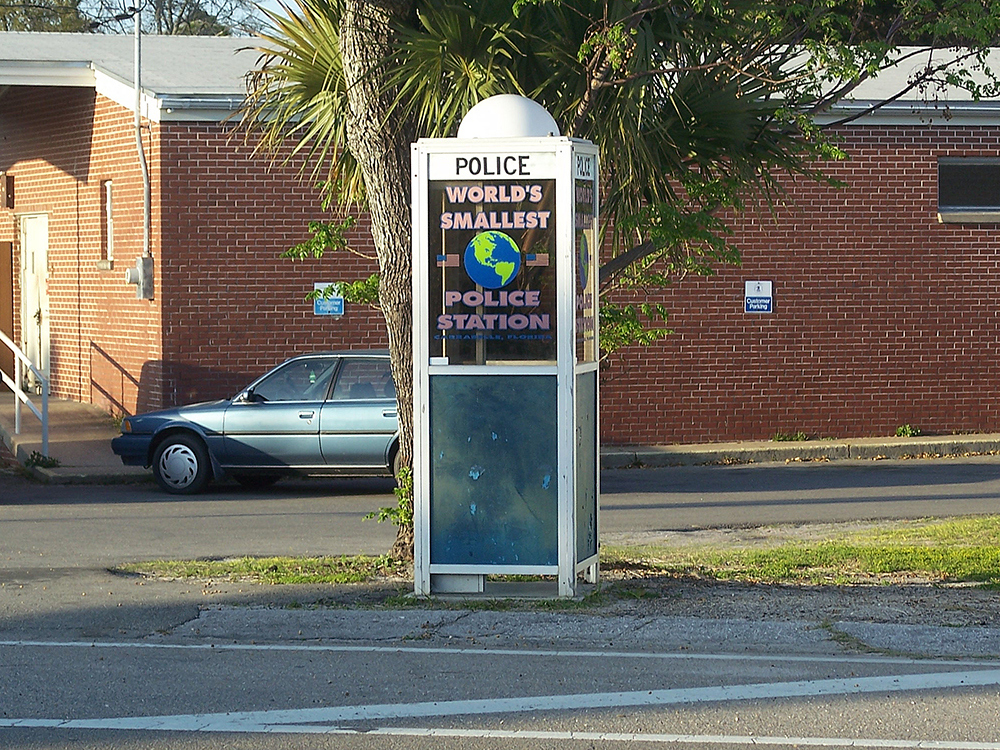So here’s the deal, folks. Imagine this: you’re standing in the middle of a vast universe, and all around you, there’s a hidden world so small that it defies the limits of human imagination. The tiniest thing in the world isn’t just a scientific curiosity—it’s a game-changer. From subatomic particles to nanotechnology, the microscopic realm is shaping our future in ways we never thought possible. So, buckle up because we’re diving deep into the world of the tiniest wonders that exist. And trust me, it’s gonna blow your mind!
Now, let’s get one thing straight. When we talk about the tiniest thing in the world, we’re not just talking about something small. We’re talking about things so tiny that they can only be measured in nanometers or even smaller. These microscopic marvels are the building blocks of everything around us, from the air we breathe to the devices we use every day. And the coolest part? They’re revolutionizing industries like medicine, technology, and energy.
But why does it matter? Well, understanding the tiniest thing in the world isn’t just about geeking out over science—it’s about unlocking possibilities. It’s about finding solutions to some of humanity’s biggest challenges, like curing diseases, creating sustainable energy, and building smarter technologies. So, if you’re ready to explore the microscopic universe, let’s dive in!
Read also:Amanda Balionis Bryn Renner The Inspiring Journey Of An Iconic Figure
Table of Contents:
- What is the Tiniest Thing in the World?
- Exploring the Microscopic World
- The Role of Subatomic Particles
- Nanotechnology: The Future is Tiny
- Applications Across Industries
- Revolutionizing Medicine
- Sustainable Energy Solutions
- Challenges in the Tiny World
- The Future of Tiny Things
- Conclusion: Embracing the Tiny Revolution
What is the Tiniest Thing in the World?
Alright, let’s start with the basics. When we say “the tiniest thing in the world,” we’re not talking about a grain of sand or a speck of dust. No, we’re talking about things that are so small you’d need an electron microscope to even see them. The tiniest thing in the world is often considered to be a subatomic particle, like an electron or a quark. But wait, there’s more! Scientists are still discovering even smaller particles, and the journey into the microscopic world never ends.
Think about it this way: if an atom were the size of a football stadium, the nucleus would be about the size of a marble. And within that nucleus, there are protons and neutrons, which are made up of even smaller particles called quarks. Mind. Blown. right?
Why Are Subatomic Particles Important?
Subatomic particles might sound like something out of a sci-fi movie, but they’re actually the foundation of everything around us. They determine the properties of matter, how atoms interact, and even how energy is transferred. Without these tiny building blocks, life as we know it wouldn’t exist. So, yeah, they’re kind of a big deal.
Exploring the Microscopic World
Now that we’ve got a basic understanding of subatomic particles, let’s zoom out a little and explore the microscopic world. This is the realm where bacteria, viruses, and other tiny organisms thrive. It’s also where nanotechnology is making waves, revolutionizing industries with its tiny yet powerful solutions.
But how do we even study something so small? Enter the electron microscope. This bad boy can magnify objects up to 10 million times, allowing scientists to see things that were once invisible to the naked eye. And with advancements in technology, we’re discovering new wonders every day.
Read also:Short Female Fade Designs The Ultimate Guide To Stylish And Modern Looks
Tools of the Trade
Here’s a quick rundown of the tools scientists use to explore the microscopic world:
- Electron Microscope: Magnifies objects up to 10 million times.
- Scanning Tunneling Microscope: Can image individual atoms on a surface.
- Atomic Force Microscope: Measures the forces between atoms and surfaces.
The Role of Subatomic Particles
Subatomic particles might be tiny, but they pack a punch. These little guys are responsible for everything from the way atoms bond to the behavior of light. Without them, we wouldn’t have the periodic table, chemistry, or even the technology we use every day.
Let’s break it down: electrons are the particles that orbit the nucleus of an atom. They’re responsible for electricity, magnetism, and chemical reactions. Protons and neutrons, on the other hand, make up the nucleus and determine the properties of an element. And then there are quarks, which are the building blocks of protons and neutrons. It’s like a never-ending puzzle of tiny pieces working together to create the universe as we know it.
Understanding Atomic Structure
Here’s a fun fact: atoms are mostly empty space. The nucleus, which contains protons and neutrons, is incredibly small compared to the overall size of the atom. And those electrons? They’re zipping around at lightning speed, creating an electric field that holds everything together. It’s like a tiny solar system, but with way more action.
Nanotechnology: The Future is Tiny
So, what happens when we harness the power of the microscopic world? We get nanotechnology—a field that’s transforming industries across the board. From tiny sensors that detect diseases to self-cleaning surfaces, nanotechnology is all about doing big things with small solutions.
And here’s the kicker: nanotechnology isn’t just about making things smaller. It’s about creating smarter, more efficient materials and devices. Imagine a world where your phone charges in seconds, or where cancer can be detected with a simple blood test. That’s the power of nanotechnology.
Applications of Nanotechnology
Here are some of the coolest applications of nanotechnology:
- Medical Diagnostics: Nanosensors that can detect diseases at the molecular level.
- Energy Storage: Nano-batteries that charge faster and last longer.
- Water Purification: Nanofilters that remove impurities from water.
Applications Across Industries
Now that we’ve talked about nanotechnology, let’s look at how the tiniest things in the world are impacting different industries. From medicine to energy, the applications are endless. And the best part? These tiny solutions are solving some of humanity’s biggest problems.
Take medicine, for example. Nanoparticles are being used to deliver drugs directly to cancer cells, minimizing damage to healthy tissue. In the energy sector, nanomaterials are being developed to create more efficient solar panels and batteries. And in consumer products, nanotechnology is being used to create stronger, lighter, and more durable materials.
Impact on Everyday Life
Here’s how the tiniest things in the world are changing everyday life:
- Smartphones: Faster processors and longer battery life.
- Clothing: Waterproof and stain-resistant fabrics.
- Food: Nano-packaging that keeps food fresh longer.
Revolutionizing Medicine
When it comes to medicine, the tiniest things in the world are making some of the biggest breakthroughs. Nanoparticles are being used to target cancer cells, deliver drugs, and even repair damaged tissues. And with advancements in gene editing, we’re on the verge of curing diseases that were once thought incurable.
But it’s not just about treating diseases. Nanotechnology is also being used to prevent them. Imagine a world where a simple blood test can detect cancer before it even starts. Or where a patch can monitor your vital signs and alert you to potential health issues. That’s the power of tiny solutions.
Challenges in Medical Nanotechnology
Of course, there are challenges to overcome. One of the biggest concerns is the safety of nanoparticles in the human body. Scientists are working hard to ensure that these tiny particles don’t cause harm, but there’s still a lot we don’t know. And then there’s the issue of cost—nanotechnology isn’t cheap, and making it accessible to everyone is a challenge we need to address.
Sustainable Energy Solutions
Energy is another area where the tiniest things in the world are making a big impact. Nanomaterials are being developed to create more efficient solar panels, batteries, and fuel cells. And with the world’s growing demand for clean energy, these tiny solutions are more important than ever.
Take solar panels, for example. By using nanomaterials, scientists are creating panels that are lighter, cheaper, and more efficient. And in the battery world, nanotechnology is being used to create faster-charging, longer-lasting batteries. It’s like the future of energy is already here.
Overcoming Energy Challenges
Of course, there are challenges to overcome. One of the biggest is scalability. While nanotechnology has shown promise in the lab, scaling it up for commercial use is no easy feat. And then there’s the issue of cost—making nanomaterials affordable and accessible is a challenge we need to tackle.
Challenges in the Tiny World
As amazing as the microscopic world is, it’s not without its challenges. From safety concerns to ethical dilemmas, there are plenty of issues to consider. And as we continue to explore this tiny universe, we need to ensure that we’re doing so responsibly.
One of the biggest concerns is the potential impact of nanoparticles on human health and the environment. Scientists are working hard to understand these risks and develop safe solutions. But it’s not just about safety—it’s also about ethics. As we develop new technologies, we need to consider the implications and ensure that they’re used for the greater good.
Addressing Ethical Concerns
Here are some of the ethical concerns surrounding nanotechnology:
- Privacy: Nanosensors could be used to monitor people without their consent.
- Access: Ensuring that everyone has access to these tiny solutions.
- Environmental Impact: Understanding the long-term effects of nanoparticles on the environment.
The Future of Tiny Things
So, where do we go from here? The future of tiny things is bright, but it’s also full of challenges. As we continue to explore the microscopic world, we need to ensure that we’re doing so responsibly and ethically. And while there’s still a lot we don’t know, one thing is certain: the tiniest things in the world are shaping our future in ways we never thought possible.
From curing diseases to creating sustainable energy solutions, the possibilities are endless. And as technology continues to advance, we’re only scratching the surface of what’s possible. So, the next time you think about the tiniest thing in the world, remember this: small things can make a big difference.
Conclusion: Embracing the Tiny Revolution
Alright, folks, let’s wrap this up. The tiniest thing in the world isn’t just a scientific curiosity—it’s a game-changer. From subatomic particles to nanotechnology, the microscopic world is shaping our future in ways we never thought possible. And while there are challenges to overcome, the possibilities are endless.
So, what can you do? Start by staying informed. Follow the latest developments in science and technology, and don’t be afraid to ask questions. And if you’re inspired by what you’ve read, share this article with your friends and family. Together, we can embrace the tiny revolution and create a better future for everyone.
And hey, if you’ve got any thoughts or questions, drop them in the comments below. We’d love to hear from you!


